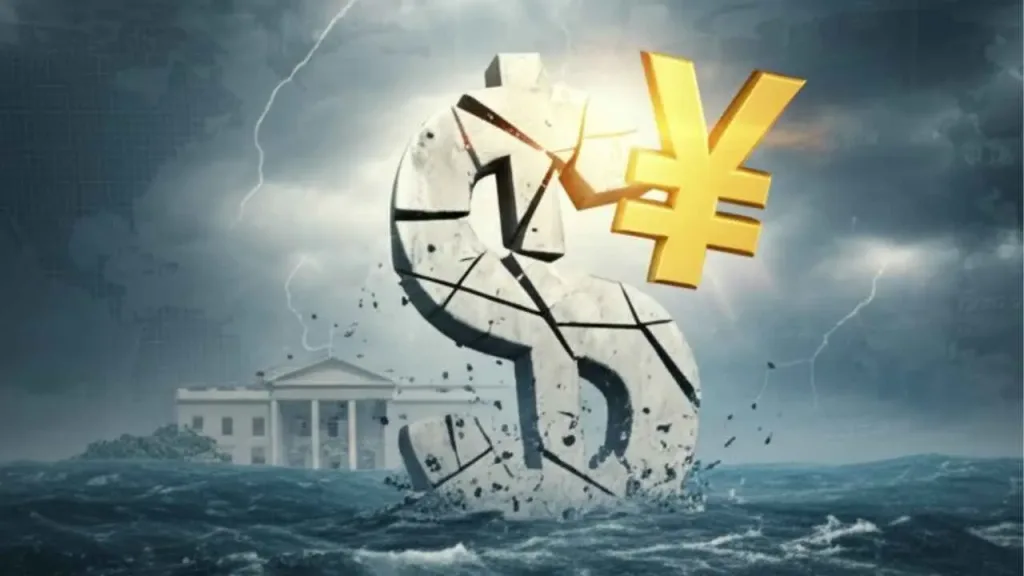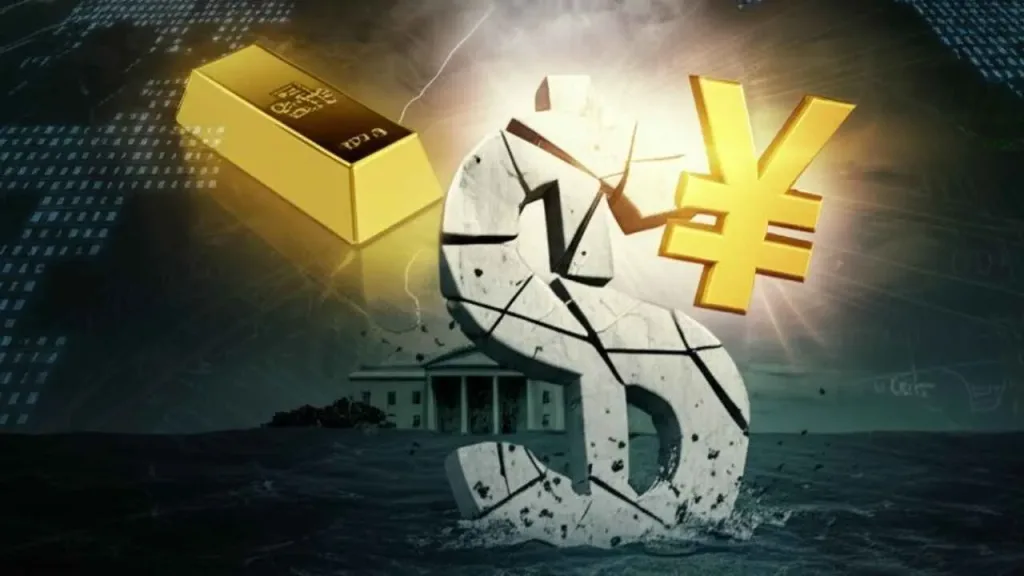The Dollar at a Crossroads: Can America’s Own Policies Undermine Its Global Currency Power?
Two looming challenges are quietly shaking the pillars of American economic dominance — and both trace back to the same core question: Can the U.S. dollar continue to reign as the world’s reserve currency?
For decades, the dollar has been the bedrock of international finance. It fuels global trade, anchors central bank reserves, and underpins investor confidence. But a new wave of political thinking — spearheaded by figures inside Donald Trump’s economic circle — is signaling a historic shift. This isn’t just about monetary policy; it’s about reshaping America’s place in the global economic order.
And ironically, the threat to the dollar may now be coming from within.
A Radical Idea with Historic Echoes
The idea isn’t entirely new. In fact, history offers a clear parallel.
Back in the 1980s, American car manufacturers were reeling. Japanese and German vehicles were flooding the U.S. market, while U.S.-made cars struggled to find buyers overseas. The culprit? A surging dollar that made American exports too expensive.
The Reagan administration responded by brokering the Plaza Accord in 1985 — a deal between the U.S., Japan, Germany, France, and the UK to strategically weaken the dollar. Central banks intervened in currency markets, selling off dollars to make U.S. goods more competitive abroad.
It worked — temporarily. But that fix wasn’t permanent.

Since 2014, the dollar has steadily strengthened again, aggravating America’s trade imbalance. For Trump and his allies, the rising dollar is more than an economic statistic — it’s a symbol of lost industrial power. And now, they want to do something about it.
Enter the “Mar-a-Lago Accord”
In late 2024, economist Stephen Miran — now serving as Trump’s chief economic adviser — co-authored a policy paper that laid out a provocative new vision: the U.S. should actively pursue a weaker dollar to revive its manufacturing base and regain control over its economic future.
Unofficially dubbed the Mar-a-Lago Accord, the proposal is anything but subtle. It advocates using geopolitical leverage — including tariff incentives and even military alliances — to coax allied countries into supporting efforts to devalue the dollar.
The logic? If countries want access to U.S. trade benefits or security guarantees, they’ll need to help Washington achieve its monetary goals.
Critics warn this approach blurs the line between economic strategy and coercive diplomacy. It suggests America might use its military umbrella as a bargaining chip for currency cooperation — a stark departure from the post-WWII consensus that underpinned U.S. global leadership.
Restructuring Debt — or Restructuring Trust?
At the heart of this radical blueprint lies another pressing issue: America’s ballooning national debt.
The U.S. government routinely borrows to fund everything from education to military spending, issuing Treasury bonds purchased by investors and foreign governments alike. But rising interest rates — a byproduct of the Federal Reserve’s fight against inflation — have made borrowing more expensive.
Miran’s solution? Renegotiate the terms of America’s debt.
The plan proposes replacing existing bonds held by foreign nations with ultra-long-term bonds — some with 100-year maturities, possibly offering little or no interest. Essentially, countries would still hold U.S. debt, but it would cost Washington far less in the short term.
While such restructuring might ease fiscal pressure, it risks something far greater: credibility.
“Suggesting the U.S. might not fully honor its debt obligations — even decades down the line — sends a chilling message to global markets,” one bond strategist noted. “It’s a slippery slope from restructuring to reputational collapse.”
If Not the Dollar, Then What?
Global reliance on the dollar isn’t just habit — it’s about trust, liquidity, and the sheer scale of U.S. markets. But with geopolitical tensions rising and fiscal policies becoming more erratic, many countries are exploring alternatives.
Some see the euro as a viable candidate. It’s backed by stable institutions and a large economy. Yet political fragmentation across the European Union — and economic strain in major players like Germany and France — casts doubt on its long-term viability.
Could China’s yuan be the heir apparent? It’s growing in international usage, but concerns over Beijing’s opaque financial system and political interference remain significant roadblocks.

And while cryptocurrencies like Bitcoin capture headlines, they remain too volatile and unregulated for central banks to seriously consider as reserve assets.
That leaves gold — the ancient hedge against uncertainty. Central banks have been stockpiling gold at the fastest pace in decades, signaling a lack of confidence in fiat currencies. A return to the gold standard isn’t imminent, but the trend is clear: faith in paper money is eroding.
A Turning Point for the Dollar
Trump’s economic playbook — from trade wars to debt restructuring — has introduced volatility into the very system the U.S. built after World War II. By alienating allies, disrupting global trade norms, and flirting with monetary extremism, the U.S. may be undermining its own greatest asset: the dollar’s unrivaled trust.
Ironically, the dollar’s downfall — if it comes — won’t be because of an external challenger. It may come from policies crafted with the best of intentions, aimed at revitalizing American industry but carrying unintended consequences for global finance.
As one economist quipped, “You can’t force the world to use your currency. Confidence must be earned, not demanded.”

Whether Trump’s ideas remain theoretical or become official doctrine in a second term remains to be seen. But one thing is certain: the global financial order is shifting, and America’s currency — once untouchable — is no longer immune to disruption.
